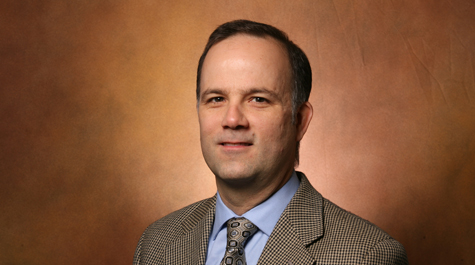W&M professor puts spotlight on state policy and school principals
A recent report written by W&M Director of Public Policy Paul Manna examines how state governments can provide local school districts help in developing, supporting and maintaining a large corps of effective school principals.
The report, “How Can State Policy Support Local School Districts as They Develop Principal Pipelines?”, was published in October by The Wallace Foundation.
“Principals are often overlooked when we talk about education,” said Manna, the Isabelle and Jerome E. Hyman Distinguished University Professor of Government and Public Policy at W&M.
“There's often an emphasis on teachers for a lot of reasons. There are more teachers than there are principals, and often parents and politicians have images of that powerful teacher that they had. But there's not a lot of conversation about principals, even though they are one of the most essential people in a school building.”
{{youtube:large|4ELd74-gQD4, Principal report}}
Coordination between states and localities is key, Manna said, because it's very easy for states to do things that get in the way of locals or for local school districts to operate in bubbles.
“Needing to recruit principals that reflect the array of students that are in school buildings is really important,” Manna added. “So the other thing that plays here is states can be very powerful conveners of resources and ideas.”
A better local and state policy partnership
One way states can help local school districts, Manna writes, is by instituting more effective licensing procedures for principals.
Moreover, states can ensure degree paths at state public universities provide the best possible education for students aspiring to go into school administration.
A better local and state policy partnership will bolster principals in many ways, Manna said.
“One would be their ability to just manage the day-to-day,” Manna said. “There's a lot of bureaucratic requirements that principals have to meet, and those things aren't going to go away, unfortunately, but helping them get better at that, that would be one.
“A second would be, because there is so much to do, helping principals get better at forming leadership teams and then distributing leadership responsibilities in schools. Because the principal’s job is impossible for one person to do, you just have to figure out ways to identify a strong team and then empower that team to do things.”
Some may say the position of principal has transformed over the years, but Manna said that doesn’t accurately depict the demands of the job.
“Principals have a very different job today than they had, let's say 15 or 20 or 30 years ago,” Manna said. “I think transformation is the wrong way to think about it. I think what's really happening is there's a layering. All of the old jobs are still there. Doing the budget, the hiring, shoveling snow off the sidewalk if there happens to be a storm and you’ve got to get the doors open. You see principals actually do this work sometimes, but now there's more.
“There's the mentoring of teachers. There's the more attention to instruction and other things, like being the face of the school outward to the community.”
Guiding lights during difficult times
The COVID-19 pandemic emphasized the many roles principals play in the successful operation of schools.
“Especially when it started to heat up and when schools were closed, principals were huge,” Manna said. “They were the ones that had to sort of rally community support. When school districts often were struggling to figure out what to do, principals were the ones who made sure the backpacks of food were filled and there was a system for parents to come in and pick that stuff up, or they were hugely important in constructing those supportive networks.”
In addition, a well-trained principal could be a great resource for schools in navigating sometimes difficult conversations, Manna said.
“With training and with support, principals also could be the people to have some of these conversations, these challenging conversations over certain political issues,” Manna said. “A lot of the debate and sort of the animosity around these topics, Critical Race Theory and equity especially, is because people don't have good information about what these things are, what's really happening, what's at stake, and principals who know how to talk to people, who actually have training in what we call difficult conversations, they can start those conversations in their own school buildings.”
Manna has worked on education policy for his entire career. He thinks principal pipelines are an overlooked and potentially high-leverage area.
“If you could get this stuff right, if you could get great principals in schools, that would go so far towards improving a lot of other outcomes that we care about,” Manna said. “We know from research that great teachers stay in schools where there are great principals. It doesn't matter what the conditions are. If you have great leaders, they're going to keep great teachers.”
Manna’s report provides the guiding questions for states and localities that might be struggling for how to begin principal pipeline work, even if the concept sounds attractive.
“The new report is not like a cookbook or a set of recipes where it's like do these five things and everything will be great,” Manna said. “It's really organized around a set of questions that state and local folks and people interested in principals can use to have conversations, because every context is slightly different, each state and locality sort of starts in a slightly different place, and so I'm trying with the work to steer these conversations in directions that I think can be productive, especially for states or localities where they don't really even know where to start.”















